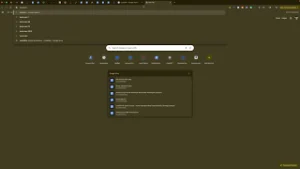Understanding your online visibility and how you stack up against competitors is crucial. LocalFalcon is a powerful tool that offers grid scans to visualize and analyze your business ranking across various locations and keywords. Whether you’re an agency managing multiple clients or a business owner aiming to optimize your local presence, LocalFalcon provides invaluable insights to enhance your marketing strategies. This comprehensive guide will walk you through how to use LocalFalcon to perform grid scans of your business ranking effectively.
Why Use LocalFalcon for Business Ranking?
LocalFalcon stands out as a specialized tool designed to offer detailed grid scans of your business’s local search performance. By visualizing your ranking across different geographical areas and keywords, you can identify strengths, weaknesses, and opportunities for improvement.
Benefits of Using LocalFalcon
- Visual Representation: Easily see where your business ranks in different locations compared to competitors.
- Data-Driven Insights: Receive actionable recommendations to improve your local SEO and marketing efforts.
- Competitive Analysis: Understand what your competitors are doing and identify strategies to outperform them.
- Customization: Adjust grid density and radius to focus on specific areas and gather more detailed data.
- Comprehensive Reporting: Generate reports that help you track progress and make informed decisions.
Step-by-Step Guide to Using LocalFalcon
Follow these steps to utilize LocalFalcon for performing grid scans and enhancing your business ranking.
Step 1: Sign Up and Log In to LocalFalcon
- Visit LocalFalcon:
- Open your web browser and navigate to LocalFalcon.
- Sign Up or Log In:
- If you’re a new user, click on Sign Up and create an account by entering your business details.
- If you already have an account, click Log In and enter your credentials.
Step 2: Access the Dashboard
Once logged in, you’ll be directed to the LocalFalcon dashboard where you can view all your recent scans and manage your projects.
Step 3: Perform a Quick Scan
- Navigate to Quick Scan:
- On the left-hand sidebar, click on Quick Scan.
- Add Your Business:
- If you haven’t added your business yet, use the search bar to type in your business name (e.g., “Paul Davis Restoration”).
- Select the correct location from the search results, especially if you have multiple franchises or branches.
- Choose Keywords:
- Based on your Google Business Profile’s primary and secondary categories, select relevant keywords (e.g., “water damage cleanup”).
- You can add multiple keywords, but it’s advisable to focus on those that drive the most business.
Step 4: Configure Grid Settings
- Select Grid Size:
- Choose the grid density (e.g., 7×7, 21×21). A higher grid density provides more data points but consumes more credits.
- Set Radius:
- Define the radius around your business location (e.g., 10 miles, 70 miles) based on your service area.
- Understand Credit Consumption:
- Be mindful of the credits required for larger grids and wider radii. Optimize your settings to balance data depth with credit usage.
Step 5: Analyze Scan Results
- Visual Ranking Map:
- View a visual representation of your business ranking across the selected grid and radius.
- Identify areas where your business ranks high (e.g., top 3) and areas where improvement is needed.
- Recommendations:
- LocalFalcon provides recommendations to enhance your ranking, such as adding new service categories or optimizing existing ones.
- Use these recommendations judiciously, as some may encourage spending more credits.
Step 6: Optimize Your Google Business Profile
- Add Relevant Categories:
- Based on recommendations, add or update your service categories in your Google Business Profile (GBP) to better align with searched keywords.
- Enhance Profile Information:
- Include links to your social media profiles, upload high-quality images, and regularly post updates to keep your GBP active and engaging.
- Consistency is Key:
- Ensure your Name, Address, and Phone number (NAP) are consistent across all platforms to boost local SEO.
Step 7: Track Progress Over Time
- Run Regular Scans:
- Schedule periodic scans (e.g., weekly, monthly) to monitor changes in your business ranking and the effectiveness of your optimization efforts.
- Compare Results:
- Use LocalFalcon’s reporting features to compare current scans with previous ones, identifying trends and measuring improvements.
Step 8: Utilize Competitor Reports
- Analyze Competitors:
- Run scans for your competitors to understand their strengths and weaknesses.
- Strategize Accordingly:
- Identify what your competitors are doing right and adapt similar strategies to improve your own ranking.
- Manage Credit Usage:
- Balance competitor scans with your own optimization needs to make the most of your LocalFalcon credits.
Best Practices for Using LocalFalcon
Implementing best practices ensures you gain maximum value from LocalFalcon’s grid scans and recommendations.
1. Focus on High-Impact Keywords
- Select Relevant Keywords: Choose keywords that directly relate to your services and have high search volume in your area.
- Monitor Performance: Regularly review which keywords are driving the most leads and adjust your focus accordingly.
2. Optimize Your Google Business Profile
- Complete Your Profile: Ensure all sections of your GBP are filled out accurately, including business hours, contact information, and services offered.
- Encourage Reviews: Positive reviews enhance your credibility and improve your ranking. Encourage satisfied customers to leave reviews on your GBP.
3. Leverage Data-Driven Insights
- Analyze Call Quality: Use CallRail in conjunction with LocalFalcon to assess the quality of calls and optimize your customer service strategies.
- Refine Marketing Strategies: Adjust your marketing campaigns based on the insights gained from your grid scans to target areas with higher potential.
4. Manage Your Credits Wisely
- Plan Your Scans: Prioritize scanning areas and keywords that are most critical to your business to make efficient use of your credits.
- Avoid Unnecessary Expansions: Only increase grid density and radius when necessary to prevent exhausting your credits too quickly.
Common Mistakes to Avoid
Avoiding these common pitfalls can enhance the effectiveness of your LocalFalcon setup and overall local SEO strategy.
1. Ignoring Recommendations
- Impact: Overlooking LocalFalcon’s recommendations can result in missed opportunities to improve your ranking.
- Solution: Evaluate each recommendation critically and implement those that align with your business goals and budget.
2. Overcomplicating Grid Settings
- Impact: Setting excessively high grid densities and wide radii can deplete your credits without providing significant additional value.
- Solution: Start with moderate settings and adjust based on your specific needs and credit availability.
3. Neglecting Profile Optimization
- Impact: A poorly optimized Google Business Profile can hinder your ability to rank well locally.
- Solution: Regularly update and optimize your GBP, ensuring all information is accurate and comprehensive.
4. Focusing Solely on Rankings
- Impact: Prioritizing rankings over lead quality can lead to ineffective marketing spend.
- Solution: Balance your focus between improving rankings and ensuring the leads generated are high quality and convert well.
5. Not Tracking Progress
- Impact: Failing to monitor your ranking progress can make it difficult to assess the effectiveness of your strategies.
- Solution: Regularly perform scans and review reports to track improvements and identify areas needing further optimization.
Frequently Asked Questions
Can I Use LocalFalcon for Multiple Locations?
Yes, LocalFalcon allows you to perform grid scans for multiple locations. This is particularly useful for businesses with multiple branches or franchises, enabling you to monitor each location’s local SEO performance individually.
How Often Should I Run Grid Scans?
It’s recommended to run grid scans regularly, such as monthly or quarterly, to monitor changes in your business ranking and the impact of your optimization efforts. However, the frequency can be adjusted based on your specific needs and credit availability.
Do I Need Technical Skills to Use LocalFalcon?
LocalFalcon is designed to be user-friendly and accessible to businesses of all sizes. While some basic understanding of local SEO and marketing principles is beneficial, no advanced technical skills are required to perform grid scans and interpret the results.
How Does LocalFalcon Compare to Other Tools?
LocalFalcon is one of several tools available for local SEO analysis. It is favored for its intuitive interface, detailed visual maps, and actionable recommendations. However, it’s essential to explore multiple tools to find the one that best fits your business needs.
Can I Track Calls from Multiple Sources with LocalFalcon?
While LocalFalcon provides insights into your local search rankings, integrating it with call tracking tools like CallRail allows you to monitor calls from various sources, including Google Ads, organic search, and social media, providing a comprehensive view of your lead sources.
Maximizing the Impact of Grid Scans with LocalFalcon
To fully leverage the benefits of LocalFalcon’s grid scans, integrate these strategies into your broader marketing and operational plans.
Align with Your Marketing Goals
- Define Objectives: Clearly outline what you aim to achieve with your grid scans, such as increasing local visibility, attracting more leads, or outperforming competitors.
- Tailor Strategies: Use the insights gained from grid scans to refine your marketing strategies, focusing on areas and keywords that drive the most valuable leads.
Use Data to Optimize Strategies
- Analyze Call Data: Combine data from LocalFalcon with call tracking tools like CallRail to gain deeper insights into lead quality and customer interactions.
- Refine Campaigns: Adjust your marketing campaigns based on data-driven insights to enhance effectiveness and ROI.
Integrate with Other Marketing Tools
- Connect with CRM Systems: Integrate LocalFalcon with your Customer Relationship Management (CRM) system to streamline lead management and follow-up processes.
- Leverage Google Analytics: Use Google Analytics in conjunction with LocalFalcon to gain a comprehensive understanding of user behavior and campaign performance.
Foster Team Collaboration
- Share Insights: Regularly share grid scan insights with your team to inform collective marketing strategies and objectives.
- Provide Training: Ensure that team members understand how to interpret LocalFalcon’s data and implement optimization strategies effectively.
Enhance Customer Experience
- Optimize Landing Pages: Use insights from grid scans to refine landing pages, ensuring they are tailored to convert traffic driven by your marketing efforts.
- Personalize Interactions: Leverage data to personalize customer interactions, addressing their specific needs and preferences effectively.
Conclusion
LocalFalcon is a powerful tool that offers detailed grid scans to help businesses understand their local search performance and optimize their marketing strategies accordingly. By following this comprehensive guide, you can effectively set up and utilize LocalFalcon to track your business ranking, gain valuable insights, and outperform your competitors. Remember to balance grid density and radius with your credit usage, implement actionable recommendations, and integrate LocalFalcon with other marketing tools for a holistic approach to local SEO and business growth.



